Easy steps to apply on your next trip
Although travel companies are becoming more proactive with the measures they take, there are many things we can all do to reduce our carbon footprint when we travel.
I have always been fascinated by aviation and every time I see an airplane overhead I stop and my mind immediately wanders.
I need to know what type of airplane it is. Where is it going? How many dreams on board? I wish I was up there…
If you’ve been following my work for a while, it’s not difficult to understand how much I love this industry and how proud I am to have been part of it for almost ten years now. It’s been a wonderful relationship in which I learned so much.
However, as with any relationship, at times you need to have important conversations. The carbon footprint of flying travelers is one of those conversations.
What is a carbon footprint
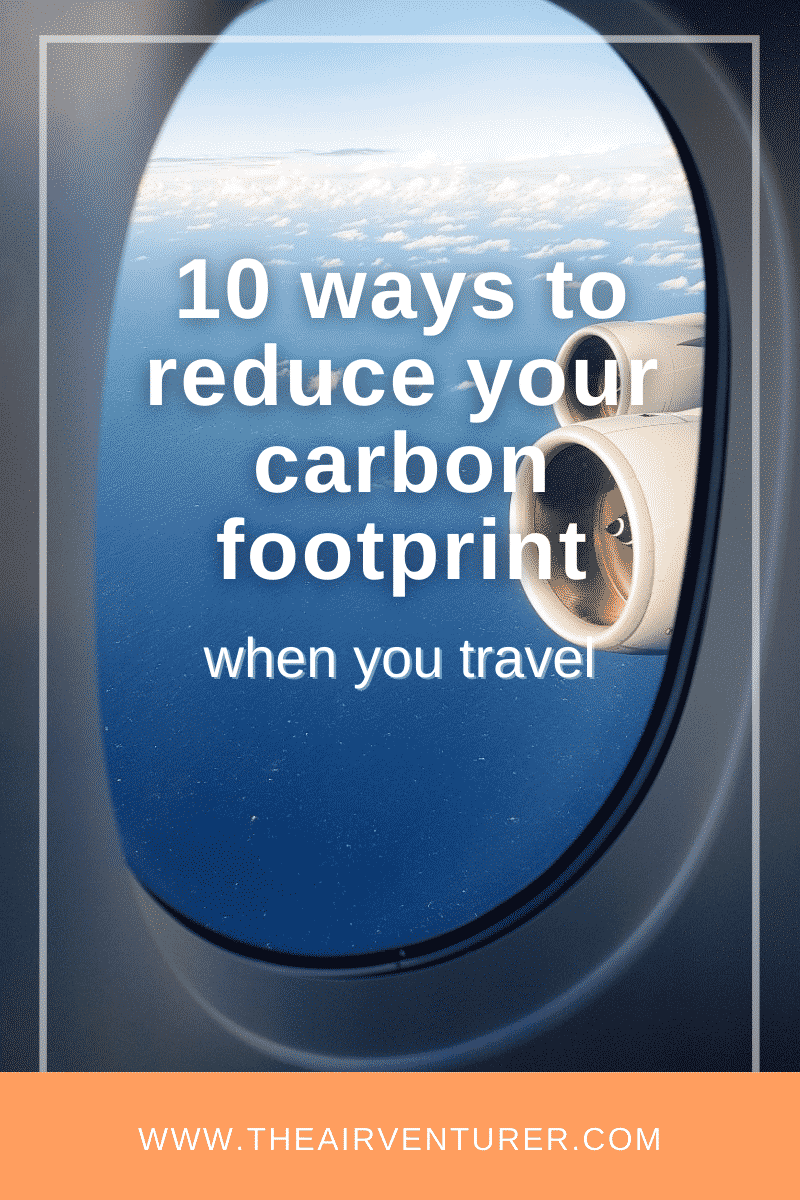
A carbon footprint represents the total amount of greenhouse gas emissions generated by an individual, a company or an organization.
Every day we make decisions that impact our carbon footprint. Everything from the clothes we wear to the food we eat, products we buy to the vacations we take, has an impact on the environment.
Perhaps as individuals, the biggest impact to our personal carbon footprint comes with the decision to fly.
According to the International Council on Clean Transportation (ICCT), in 2019 CO2 emissions from all commercial operations totaled 918 million metric tons which is a 29% increase from 2013. Around 85% of emissions come from passenger transportation.
The aviation industry is also under the spotlight for generating this amount of greenhouse gases with a very small percentage of the World’s population on board airplanes.
According to some estimates, only about 10% of the global population flew in 2019. Developed nations have a very high carbon footprint from commercial aviation demand, with North America generating 50 times more demand per capita than Africa.
On a national level, the same study shows that the impact is even more severely skewed. For instance, in the US 12% of the population are estimated to take 68% of all flights.
This shows us that frequent flyers have an imbalanced impact on the global carbon footprint of aviation.
For some, flying is part of their job and their livelihood depends on them getting from one customer to another quickly. But there are also many who should be looking closer at their travel patterns and see if all their trips are really necessary.
Don’t get me wrong, I love to fly as much as any other aviation geek. I’m not saying we should all stop flying.
I just want to propose a more informed approach to our travel decisions.
Why is it important
Being aware of your carbon footprint is important because it enables you to make better decisions. For your health and for the health of our planet.
For those of us privileged enough to have the possibility of flying, we must understand how lucky we are and act responsibly.
The distribution of aviation’s benefits for human life is not equal across the Globe. We must be aware of that.
The negative impacts of global warming and climate change are real everywhere though.
A return flight in economy class from London Heathrow to Singapore Changi will cause emissions of 5 tonnes of CO2 per person. That is half of the average carbon footprint of a person living in the UK in one trip.
The same flight in first class emits three times more CO2 per passenger.
How to reduce your carbon footprint when you travel
1. Research before you book your ticket
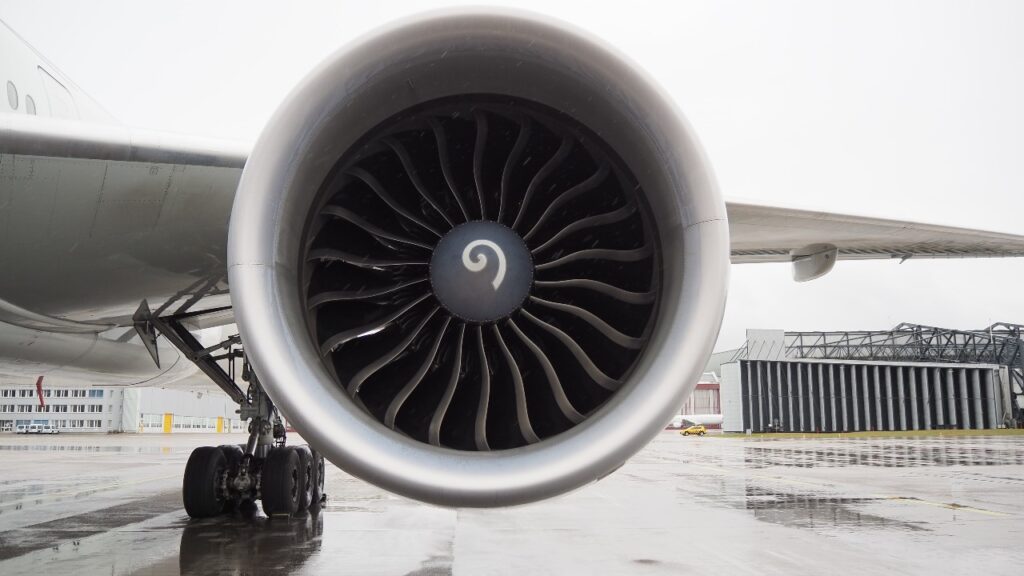
If you must fly, choose airlines with solid sustainability programs. Many airlines invest in clean technologies for the future. Some examples are biofuel research and electric powered airplanes.
Fly newer generation aircraft. Check the fleet of your airline and see if they are upgrading to new airplanes which are less noisy and have better fuel efficiency.
2. Fly in economy
Many times flying for business can be exhausting. One perk that most business travelers enjoy when they leave their homes behind and fly for work engagements is premium class flights.
However, 19% of CO2 from commercial aviation in 2019 was linked to passengers flying in premium seating (first and business classes), higher than the share from air freight.
Therefore, I propose that next time before booking a premium class flight, let’s follow a more balanced approach and ask ourselves:
- Is the flight really necessary? Can the meeting be held online? Can the contract be signed digitally?
- If you must fly, can you do it in economy class?
3. Pack light
Heavier airplanes burn more fuel. So travel light. You’ll have less things to carry and decrease your carbon footprint at the same time.
4. Fly during the day

To be clear there is no difference between the amount of carbon an airplane emits during the day compared to a night flight. However, there is a difference in the effect these emissions have depending on the presence of sunlight.
During the day the contrails an airplane leaves behind capture the heat from the Earth but also reflect sun rays back into space.
Contrails caused by night flights don’t reflect the sun, thus contributing more to global warming.
The season you fly in is also important. During cold temperatures and in high humidity the contrails are much more damaging.
5. Fly direct
Airplanes cause more pollution at taxi, take off and landing when engines run at very low efficiency rates. The worst part of this cycle is during taxi and waiting to access the runway.
At major international hubs like New York JFK or London Heathrow, the time from leaving the gate to the point of take off can frequently take up to 30 minutes.
Therefore the more legs on your journey the more you add to your carbon footprint.
6. Take the train
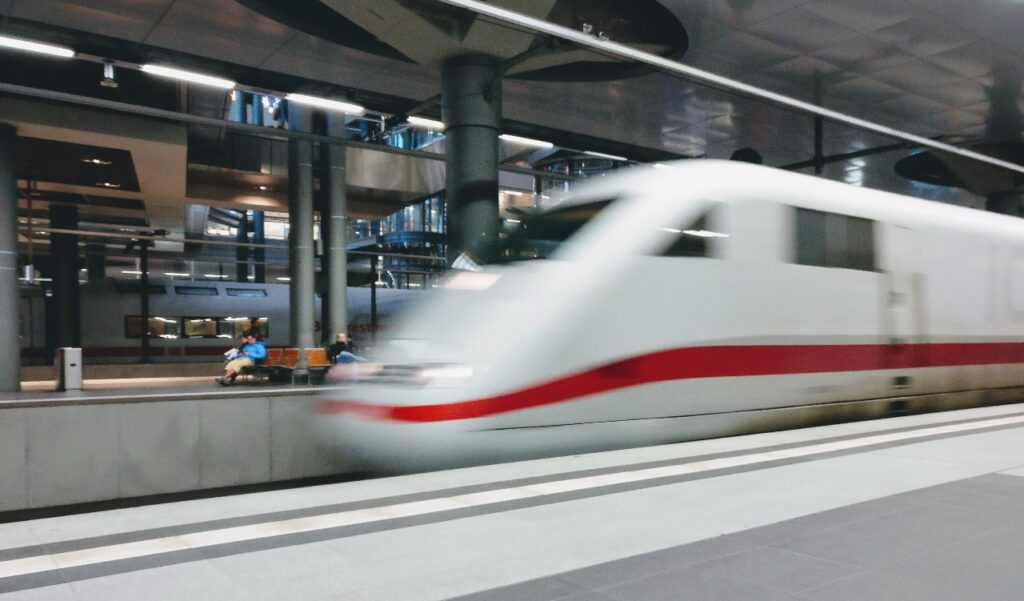
In many cases trains are much more efficient for business meetings. They generally arrive close to city centers and you don’t have to spend so much time in queues like at the airport.
Trains are a very good solution for destinations where you don’t have direct flights. Perhaps fly direct to the nearest hub then take a train to your destination instead of another internal flight.
7. Travel with purpose
Since you’re choosing to travel and you’re privileged enough to fly, why not make sure your journey has a positive impact. Research about your destination and see if you can leave something positive behind you.
Knowing more about the place you’re about to visit will give you a more fulfilling experience and enable you to understand the power of your travel choices.
8. Carbon offsetting
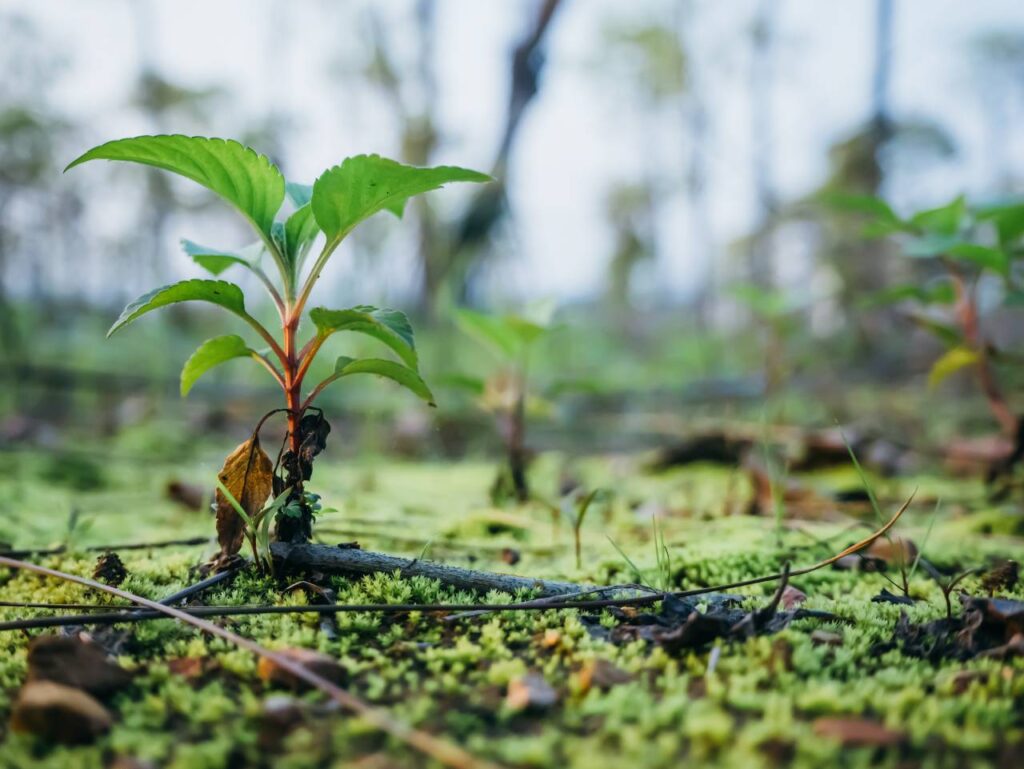
This concept means compensating for CO2 emissions. You can do this by helping or sponsoring schemes and organizations that seek to achieve equivalent reductions of CO2 in the atmosphere.
This topic is controversial because carbon offsetting does not target the cause (greenhouse gas emitting actions) but rather tends to make people feel less guilty and fly even more.
I am of the opinion that it is better than nothing and I will write more about it in other posts.
Some good resources to calculate your individual level of emissions are Atmosfair, where you can even choose the type of airplane and class. Others I recommend are myclimate, climatecare, and terrapass.
Regarding sources for projects, I cannot recommend one organization over another. It wouldn’t be fair.
The one I personally used a few times is Gold Standard. But again, this is not a recommendation and I am not affiliated or sponsored in any way.
Do your own research before you put your money to action. It will give you greater satisfaction.
9. Be mindful of the amount of trash you generate
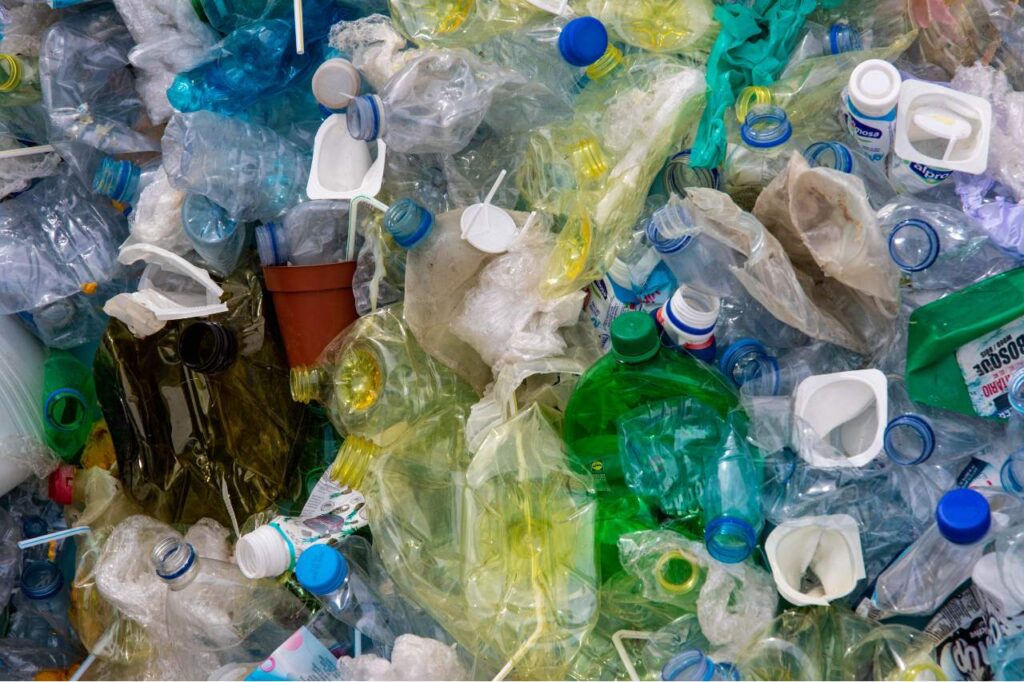
Trash that is generated on a flight rarely gets sorted for recycling due to short turnaround times.
Some easy ways you can reduce your waste when you fly and make your trips more enjoyable are: bringing your own food and snacks (cheaper on low cost flights and better quality), taking a reusable water bottle and coffee cup, saying no to everything wrapped in plastic from headphones to cutlery. Just bring your own (don’t take a knife though 😁).
10. Consider renting gear at your destination instead of checking in extra large items
If you’re going on a ski trip or a mountain biking adventure, avoid checking in extra large gear. Renting is normally cheaper and way better for the environment.
Conclusion
I hope that by now you understand I am not proposing we all stop traveling.
On the contrary, I believe traveling is the most fulfilling and transformative experience one can invest in. I just propose a more balanced approach guided by awareness.
Collectively we have the power to push airlines and airports towards a cleaner future. If we refuse plastic, if we choose to fly only with responsible airlines, they will change their behaviour to get our business.
Choose an action step from above and implement it on your next trip. Let me know if you have any questions or need any help.
What to read next
- What is Ethical Travel and How to be an Ethical Tourist
- How To Plan Your Perfect Ethical Trip To The Grand Canyon
- Best resources to help you prepare for Global travel during Covid-19
- Covid-19 Safer travel checklist
What do you think is a quick way to cut back on your carbon footprint when you fly? Have you tried any of the steps above? What would you add to my list? Please comment below.
Do please share this post if you found it useful and remember to always seek personal growth by exploring the World responsibly.



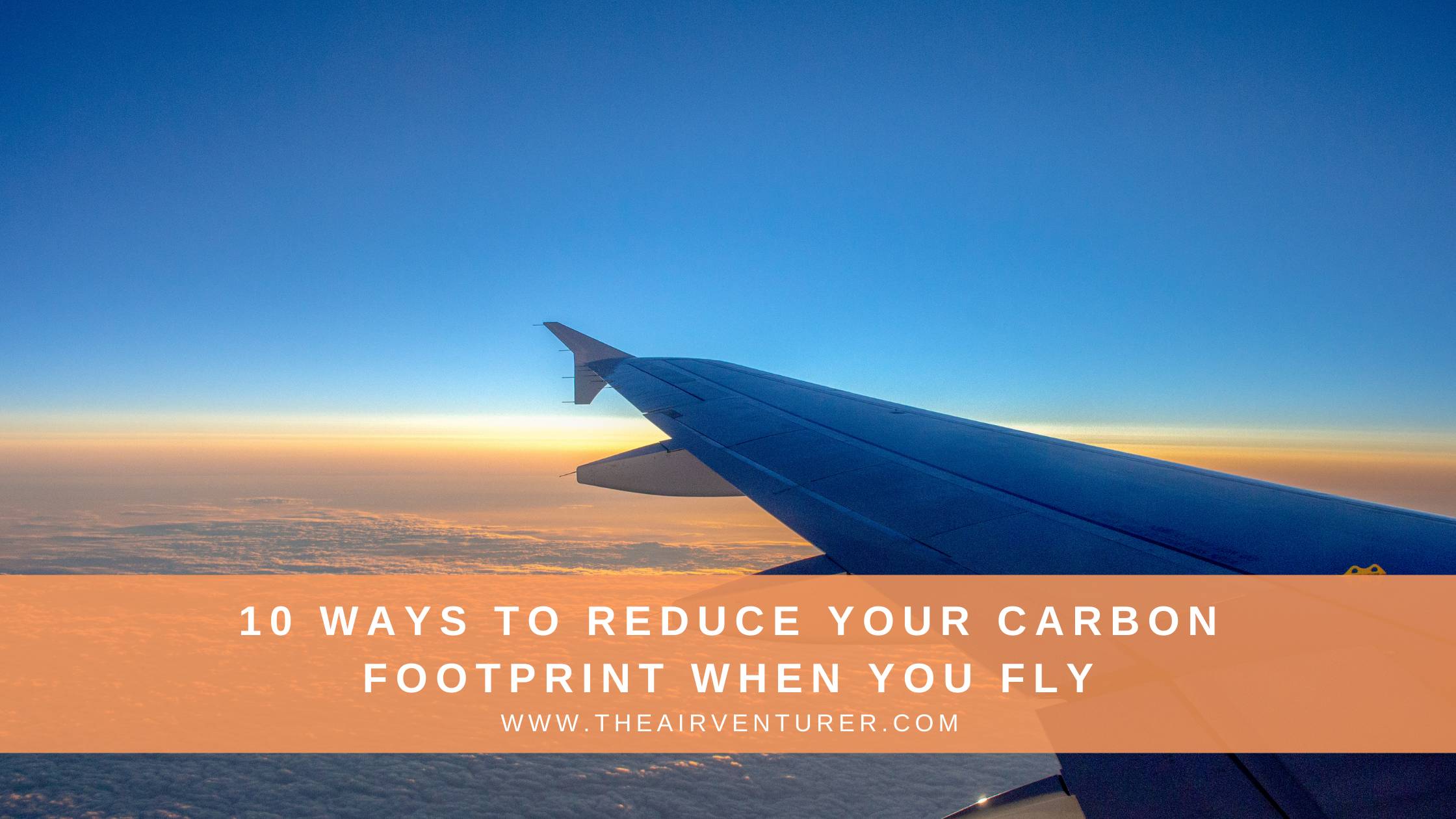





Love these! Flying is something I’ve only done for international flights and most couldn’t be avoided. So I’ll look into the carbon offsetting side. Have you got another post going into Carbon offsetting in more detail?
Thanks Thando for taking the time to read my thoughts on this topic. I will post an article about carbon offsetting soon, there’s quite a bit to cover.
Useful tips.
Thank you Fiona! Which one will you apply on your next trip?